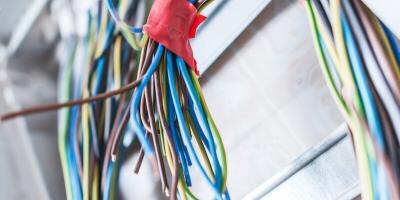Electrical Fault Finding Techniques
Finding electrical faults, you will need basic knowledge of electrical faults identification in addition to electrical diagrams. Generally, an electrical circuit is made of electrical components like lights, pumps, fans and motors, switches, fuses, relays, circuit breakers and fusible links. With a wiring diagram, the fault-finding will be simple because you will identify most of the components.
Check whether each of the components on your electrical circuit is functioning properly. If several circuits or components have failed simultaneously, the problem might be due to the shared earth or fuse/power connection.
The electrical problems can arise due to various issues such as corroded or loose connections, blown fuse, faulty earth connection or melted fusible links, faulty relay or faulty sensor. Before you start the testing process, you have to inspect the condition of the wires, fuses and connections in the circuit visually.
A Digital Volt-Ohm Meter (DVOM) can help you identify more faults. The device will help you check for the amperage, volt, resistance, continuity and test the lights for load and voltage drop. A scope will be a better choice when conducting advanced fault finding.
For intermittent faults, perform the wiggling test on wiring. The test involves wiggling the wiring to see if a fault occurs. When using the technique, you will have to narrow down a fault to its source. Intermittent wiring faults occur because of dirty or poor connections, internally broken wiring and damaged wiring insulation.
Finding Electrical Faults
At times, Finding electrical faults is hard. Electrical faults cause some faults or defects and therefore necessitate electrical troubleshooting. When tracing and rectifying the faults, you have to keep in mind that there are the electrical problems can arise due to one of the following three causes.
Open circuit
An open circuit occurs when a connection breaks. To test such a problem, you will have to use the continuity test.
Short circuit
Any closed connection is known as a short circuit. Such a connection causes flow of excess current in the circuit and damages the electrical components. A short circuit problem mostly arises due to damaged/weak insulation that you can detect with the insulation test. To troubleshoot a short circuit, check channel resistance, the potential difference between at least two points and the flow of current. Check the input voltage and check the total voltage at various test points on the PCB. Ensure that every protection device is operating in properly.
Typically, an electrical circuit features two main components: control circuit and the power circuit. Therefore, you will have to start by ensuring that:
- The input voltage exists
- The protection devices are functioning properly
- Channel resistance is normal
- Every component is not physically damaged due to excess heat
For the control circuit, ensure that:
- The input voltage to the control circuit is right,
- The switches, relays and timers are healthy,
- The cable has continuity,
- The contact switches are functioning logically and
- The timing of your switching circuit is right
The continuity test
You can check the continuity of your circuit in two ways: the dead continuity and the power on continuity. The dead continuity testing requires you to switch off the power to reduce the risk of a shock. When conducting an insulation test, you will have to switch off the power too.
To check for the circuit continuity when the power is off, you will multimeter the multi-meter knob on beep sound. The beep will confirm that the electrical path is complete. If the path is broken, you should not expect a beep.
If you are concerned about the safety of your kitchen appliances, you should avoid completing the fault-finding processes the DIY way and ask a licensed person to complete a thorough check. By engaging Gordon’s Powers technician in electrical fault-finding, you will manage to avoid any future problems. They will use the suitable equipment and prevent the occurrence of problems during the maintenance.
If you realise that most of your equipment might become unsafe, you will have to change how you do the inspections. The techniques should provide you with a good start point, but it is always good you engage Gordon’s Powers professionals each time you identify a problem with the electrical circuit.
For more information contact Gordon’s Powers on (02) 9199 7480. Our level 2 electricians and 24-hour emergency electricians are available around the clock to assist you with our friendly electrician Sydney.










